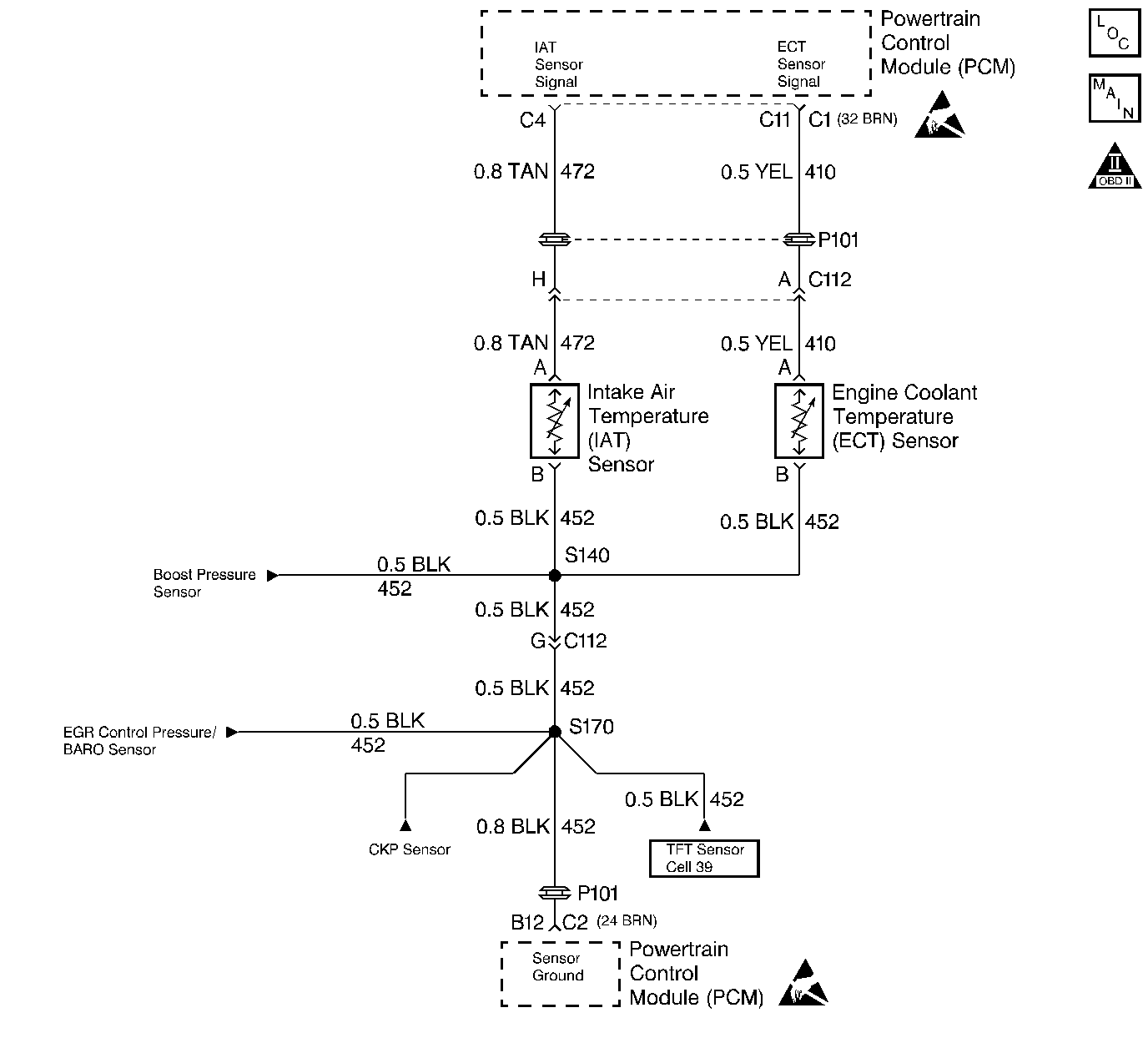
Circuit Description
The Engine Coolant Temperature (ECT) sensor is a thermistor that controls signal voltage to the PCM. When the engine is cold, the sensor resistance is high, therefore the PCM will see high signal voltage. As the engine warms, sensor resistance becomes less and voltage drops. The voltage measured across the thermistor is interpreted as a temperature. This is a type B DTC.
Conditions for Setting the DTC
| • | Engine running for at least 8 minutes. |
| • | ECT less than -30°C (-22°F). |
| • | Conditions met for 2 seconds. |
Action Taken When the DTC Sets
Idle increase.
Conditions for Clearing the MIL/DTC
| • | The PCM will turn the MIL off after three consecutive trips without a fault condition. |
| • | A History DTC will clear when forty consecutive warm-up cycles that the diagnostic does not fail (coolant temperature has risen 5°C (40°F) from start up coolant temperature and engine coolant temperature exceeds 71°C (160°F) that same ignition cycle. |
| • | Use of a Scan Tool |
Diagnostic Aids
Check harness routing for a potential short to voltage. After engine is started, the ECT temperature should rise steady to about 85°C (185°F). A skewed sensor could result in poor driveability complaints. Refer to Temperature vs Resistance .
Test Description
Number(s) below refer to the step number(s) on the Diagnostic Table.
-
This test determines if P0118 is an intermittent condition.
-
This test will determine if signal circuit is open, or a malfunctioning PCM.
Step | Action | Value(s) | Yes | No |
|---|---|---|---|---|
1 |
Important: Before clearing DTC(s) use the scan tool Capture Info to record freeze frame and failure records for reference, as data will be lost when Clear Info function is used. Was the Powertrain On-Board Diagnostic (OBD) System Check performed? | -- | ||
Does the ECT display a temperature colder than or equal to the specified value? | -30°C (-22°F) | |||
Does the scan tool display ECT greater than or equal to the specified value? | 151°C (303°F) | |||
4 | Jumper the ECT sensor signal circuit to a known good ground. Does the scan tool display a ECT greater than the specified value? | 151°C (303°F) | ||
5 | The DTC is intermittent. If no other DTC(s) are stored, refer to Diagnostic Aids. Are there any other DTCs stored? | -- | Go to the Applicable DTC Table | Go to Diagnostic Aids |
6 | Inspect the sensor connector and PCM connector for a proper connection. Was a problem found? | -- | ||
7 | Check the ECT sensor ground circuit for an open between the ECT sensor and the PCM. Was a problem found? | -- | ||
8 | Check the ECT sensor signal circuit for an open between the ECT sensor and the PCM. Was a problem found? | -- | ||
9 | Repair the circuit as necessary. Is the action complete? | -- | -- | |
10 | Replace the ECT sensor. Refer to Engine Coolant Temperature Sensor Replacement Is the action complete? | -- | -- | |
11 | Replace the PCM. Important: The new PCM must be programmed. Refer to Powertrain Control Module Replacement/Programming Is the action complete? | -- | -- | |
12 |
Does the Scan Tool indicate that the diagnostic Passed? | -- | ||
13 | Using the Scan Tool, select Capture Info, Review Info. Are any DTCs displayed that have not been diagnosed? | -- | Go to the Applicable DTC Table | System OK |
